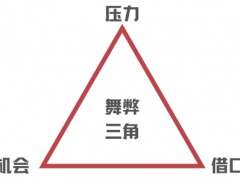???? 據OE網站1月29日報道,美國石油庫存繼續趨近五年平均水平,這一跡象表明,盡管新冠病毒自2020年底以來卷土重來,但石油市場仍在繼續實現再平衡。
????不包括戰略石油儲備的原油及成品油總庫存上周減少了1200萬桶,自2020年年中以來減少了1.3億桶。
????根據美國能源信息署(EIA)的數據顯示,在過去30周中,庫存有24周下降。
????其結果是,目前的石油庫存較2015-2019年疫情前五年平均水平高出6%,低于6月底14%的過剩。
????原油盈余從19%縮減至9%,而產品盈余從12%縮減至5%。如今,汽油庫存幾乎與疫情前的五年平均水平完全一致,盡管餾出油仍然有10%的盈余,但比去年6月的近30%有所下降。
????至關重要的是,供應國內市場的餾分油(反映消費狀況的指標)數量高于疫情前五年的平均水平,這使柴油和取暖油庫存面臨下行壓力。
????美國煉油廠繼續限制原油加工,比疫情前的平均水平低8%,而產品消耗量與2015-2019年的平均水平相比僅下降4%。
????受限制的加工量確保了產品庫存繼續下降,即使自去年第四季度開始以來病毒感染的數量再次上升。
????但隨著餾分油盈余減少,煉油商不再需要以犧牲柴油為代價,使汽油產量最大化,中、輕餾分油的產量比已恢復正常。
????汽油庫存已恢復正常。餾分油庫存將在第一季度末恢復正常。
????原油庫存仍處于高位,但如果OPEC+和美國頁巖生產商繼續限制產量,那么過剩將在第二季度末或第三季度初消除。
????郝芬 譯自 OE
????原文如下:
????Oil Market On Track to Rebalance Around Mid-2021
????U.S. petroleum inventories have continued to converge down towards the five-year average, a sign that oil market rebalancing remains on track, despite the resurgence of the coronavirus since the end of 2020.
????Total stocks of crude oil and products, excluding the strategic petroleum reserve, fell by 12 million barrels last week and are down by 130 million barrels since the middle of 2020.
????Stocks have fallen in 24 out of the last 30 weeks, according to data from the U.S. Energy Information Administration.
????As a result, petroleum inventories are now 6% above the pre-pandemic five-year average for 2015-2019, down from a surplus of 14% at the end of June.
????The surplus in crude has shrunk to 9% from 19%, while the surplus in products has narrowed to 5% from 12%.
????Gasoline stocks are now almost exactly in line with the pre-epidemic five-year average, and while distillates are still in a surplus of 10%, that has fallen from almost 30% last June.
????Crucially, the volume of distillate supplied to the domestic market, a proxy for consumption, is running above the pre-pandemic five-year average, which is keeping downward pressure on stocks of diesel and heating oil.
????U.S. refineries continue to restrict crude processing, with rates 8% below the pre-pandemic average compared to a drop in product consumption of just 4% versus the 2015-2019 average.
????Restricted processing volumes have ensured product stocks continue to fall, even as the number of virus infections has risen again since the start of the fourth quarter.
????But with a smaller surplus in distillates, refiners are no longer having to maximize gasoline output at the expense of diesel, and the yield ratio between middle and light distillates has returned to normal.
????Gasoline inventories have normalized. Distillate inventories should return to normal by the end of the first quarter.
????Crude stocks remain elevated but the surplus should be eliminated by the end of the second quarter or early in the third, provided OPEC+ and U.S. shale producers continue to restrict their production.







